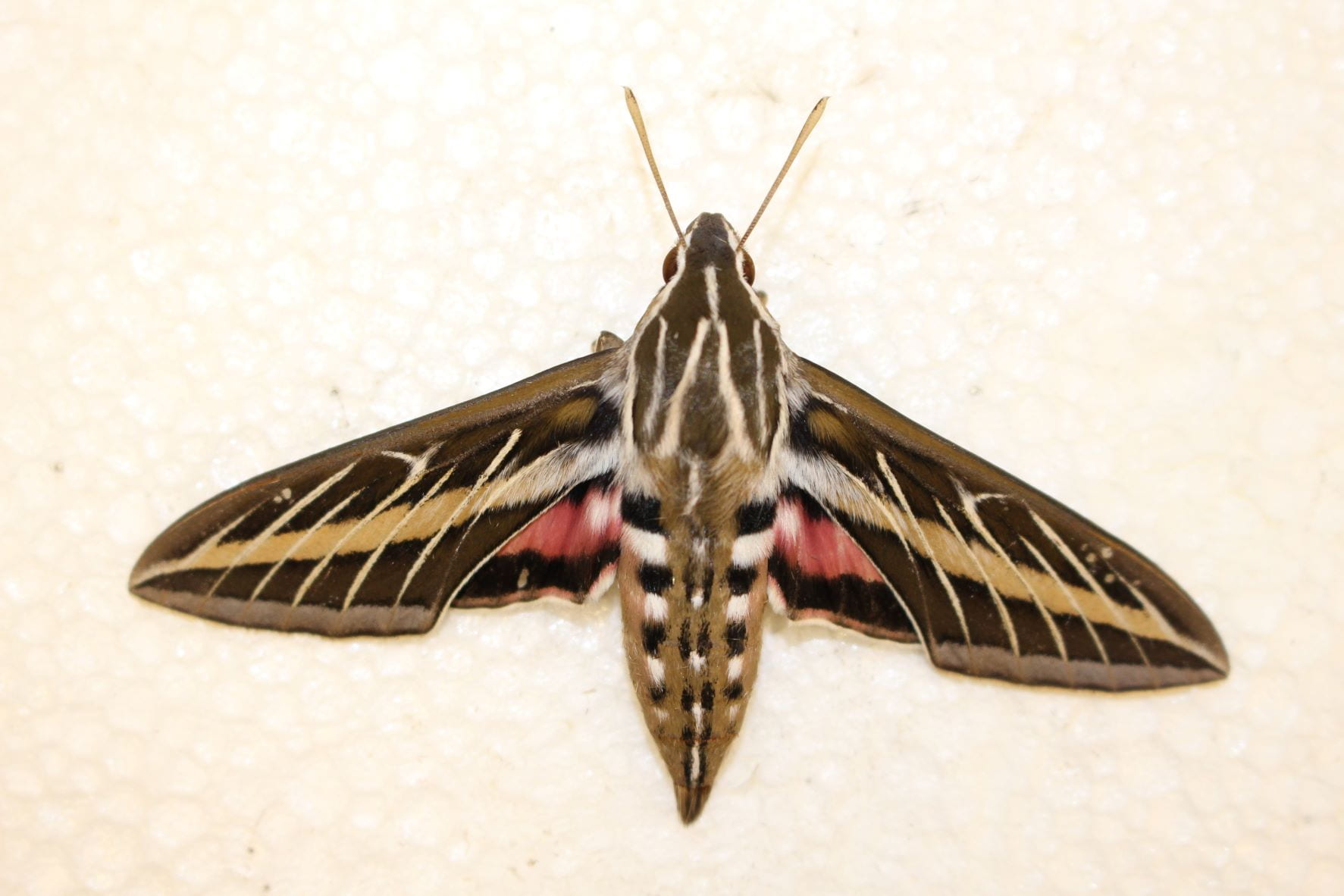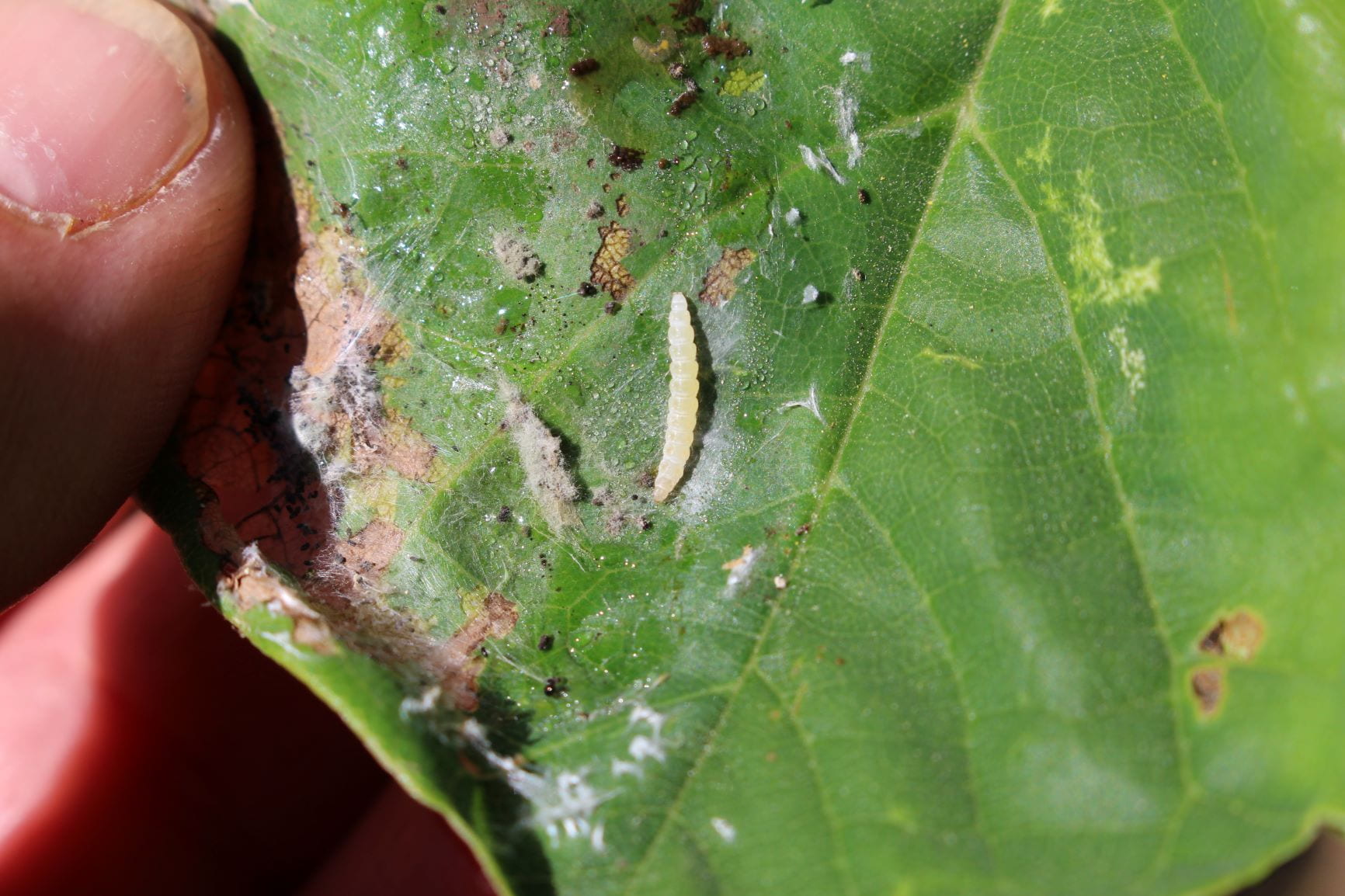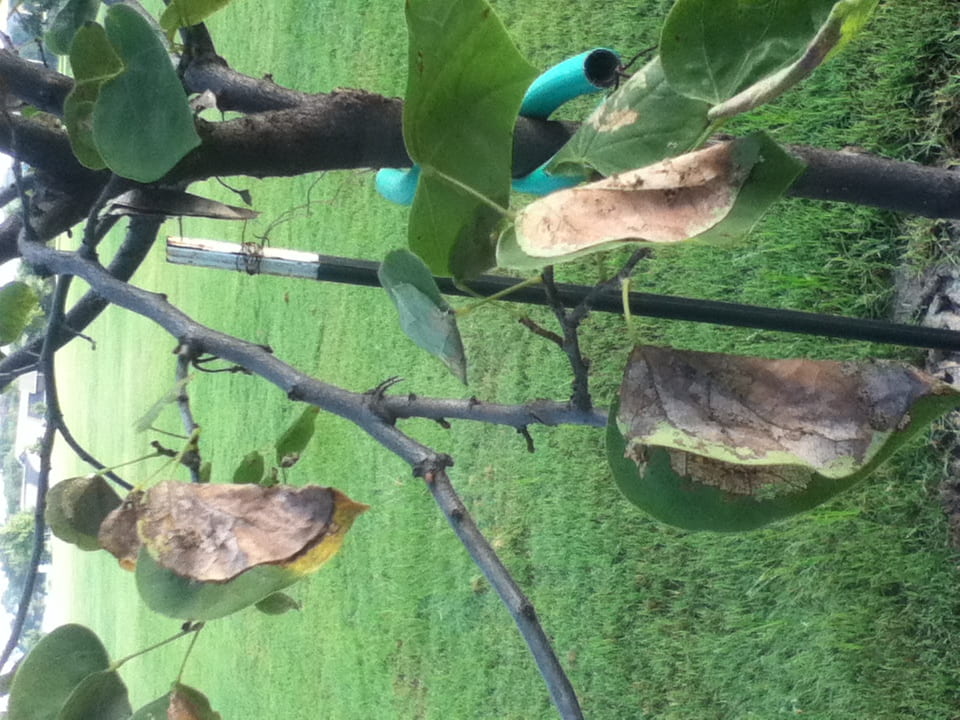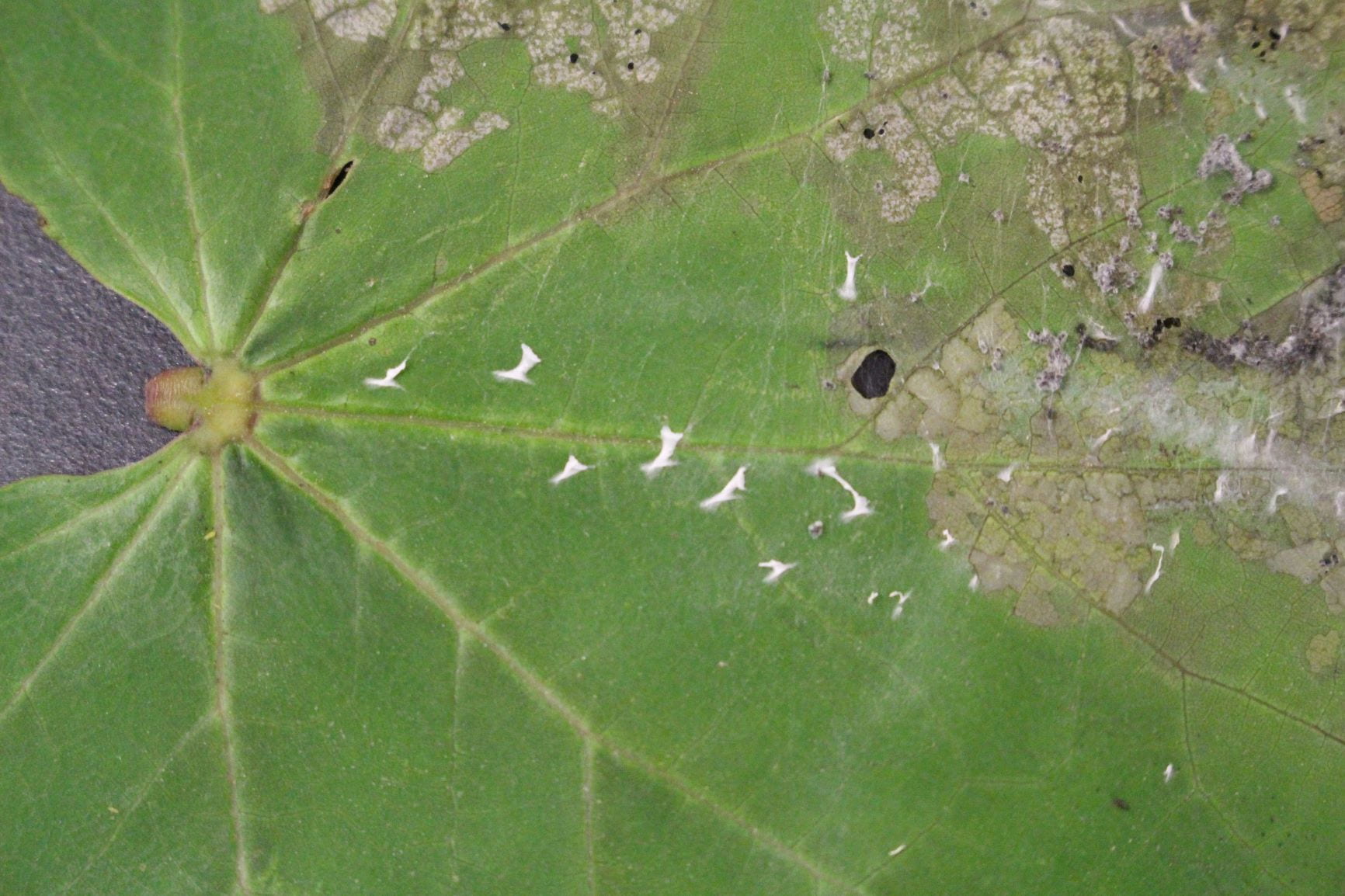–by Raymond Cloyd — Horticultural Entomologist
We are receiving inquiries regarding large wasps flying around in landscapes and gardens. These large wasps are the Eastern cicada killer, Sphecius speciosus. Cicada killer adults are approximately 2.0 inches long and black with yellow-banded markings on the abdomen. The head and transparent wings are red-brown (Figure 1). Cicada killers are not dangerous, but they are intimidating; especially the males. Cicada killers are solitary wasps, not social wasps like yellowjackets. Adults live up to 75 days from July through September, and feed on flower nectar and plant fluids.

Figure 1. Cicada Killer Adult (Raymond Cloyd, KSU)
A female cicada killer will dig a 6 to 10-inch burrow (1/2 inch in diameter) in the soil; usually in sandy or loose soil. A pile of sand or soil, depending on soil type, will surround the entrance. Afterwards, cicada killer females search for dog days cicada, Tibicen pruinosa, adults located on the trunks and lower branches of trees. The female stings an adult cicada using her ovipositor (egg-laying device), flips the cicada over, straddles the cicada, and then transports the immobilized or paralyzed cicada back to the burrow in the soil (Figures 2 and 3). Each burrow may contain three to four cells with one or two cicadas. The dead cicada serves as a food source for the cicada killer larvae, which are legless and grub-like. A female will lay one egg per cicada if the egg is unfertilized. Larvae that emerge from unfertilized eggs are males whereas larvae that emerge from fertilized eggs are females and are provided with two cicadas. Larvae emerge (eclose) from eggs in two to three days and feed on paralyzed cicadas. The female will eventually cover the burrow, dig another one, and repeat the process. Full-grown larvae overwinter inside silken cases, pupate in spring, and adults emerge from July through August. There is one generation per year in Kansas.
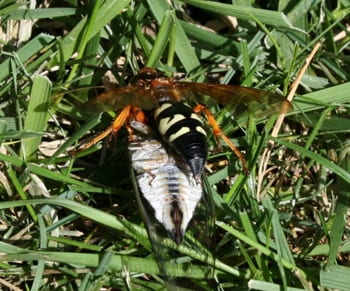
Figure 2. Cicada Killer Female Transporting A Paralyzed Cicada To Her Nest (Raymond Cloyd, KSU)

Figure 3. Cicada Killer Adult Female With Dead Cicada
Cicada killers are an urban nuisance pest, especially when large numbers are nesting in bare areas, in turfgrass, or around a structure. People are generally concerned because cicada killers resemble giant yellowjackets or they think cicada killers are the so-called “Murder Hornet”. However, in general, cicada killers will not sting an individual. Wasp and bee female stingers are modified egg-laying devices (ovipositors), so males cannot sting. Females may sting if they going to be stepped on with bare feet or grabbed with bare hands.
Male cicada killers establish aerial territories and patrol for intruders. A male cicada killer wards-off other males that enter his territory and attempt to mate with females. An individual that walks into the territory is typically confronted by a very large wasp hovering in front of the face that ‘zips’ to the side and back. However, after determining that the intruder is not a rival or a threat, the male cicada killer ignores the individual. Nonetheless, an individual walking across a lawn, fairway, or other area where cicada killers are nesting, will experience the same treatment through each male’s territory. Sometimes there can be up to 20 cicada killer males in one area. After females have departed the nest, then males will eventually leave.
Cicada killers are common in areas with bare soil, so mulching, planting ground covers, or sodding may reduce potential problems with cicada killer populations. Cicada killers can be a problem in well-maintained areas such as irrigated and regularly fertilized turfgrass. In addition, cicada killers can be a problem when nesting in areas accessible to or frequented by the public. Applying carbaryl or pyrethroid-based insecticides containing the active ingredients; permethrin, bifenthrin, cyfluthrin, and/or lambda-cyhalothrin to the burrowed (nesting) area may kill females in golf course sand traps. In home yards, cover sandboxes with a tarp when not in use to deter cicada killers. Sand below swings, jungle gyms, or other playground equipment should be replaced with bark mulch or shredded tires.
Managing cicada killers in baseball infields and volleyball courts is more difficult because people with minimal clothing and exposed skin are diving and sliding onto the soil. Consequently, the use of an insecticide may not be an option. However, in the case of a volleyball court, a geotextile fabric placed beneath the sand may create a barrier that prevents cicada killers from creating burrows.

